HOSTY Association (Graguate School of Advanced Science and Engineering)
Email: bprc*hiroshima-u.ac.jp (Please replace*with @)
Date & Time: Thursday 18 November, 2021 16:20-17:50
Place: Engineering 110 Lecture Room, Higashi-Hiroshima Campus, Hiroshima University
Program
Chair & Commentary: Yukihiko MATSUMURA
Professor, Graduate School of Advanced Science and Engineering, Hiroshima University
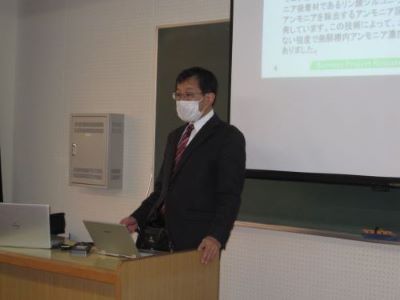
Lecture: Yuito SUGANUMA
M1 student, Graduate School of Advanced Science and Engineering, Hiroshima University
“Kinetic Analysis of Hydrothermal Ammonia Production from Poultry Litter”
Biomass, including livestock excrement, is increasingly being used for energy. Livestock excrement causes problems of air and water pollution. For this reason, the technology of methane fermentation is often used in order to treat it properly and make effective use of it. However, in methane fermentation, the nitrogenous components of the biomass form ammonium ions, which inhibit the reaction. In order to avoid this problem, I have succeeded in using hydrothermal pretreatment to convert nitrogenous components into ammonium ions before methane fermentation, which are then recovered as ammonia. We have also investigated the reaction rate of nitrogen components in poultry litter.
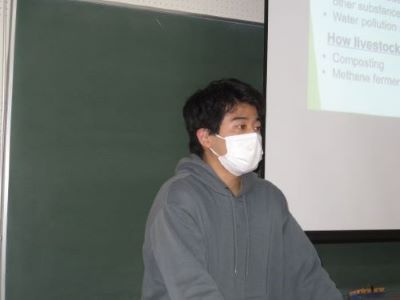
Lecture: Akira WAKI
M2 student, Graduate School of Integrated Sciences for Life, Hiroshima University “Molecular breeding of yeast for the efficient production of fermented products from lignocellulosic biomass”
In order to create a recycling-oriented society, establishment of fermentation technology for producing useful substances such as ethanol, which has a large effect of reducing CO2 emissions, from lignocellulosic biomass, a renewable resource, is expected. Yeasts with high fermentation ability are widely used for fermentation production from glucose, but cannot utilize hemicellulose-derived xylose. In addition, in the fermentation process, high fermentability is required for yeast even under severe stressed condition. In this seminar, I will introduce some related topics regarding breeding development of yeasts with these useful traits.
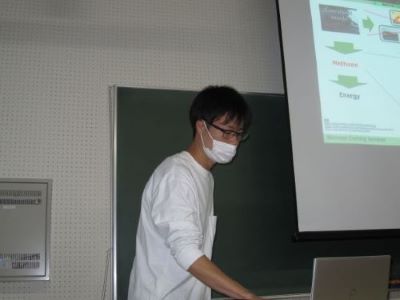
Lecture: Rittanupap THAVORN
D1 student, Graduate School of Advanced Science and Engineering, Hiroshima University
“A comparative study in hydrothermal carbonization of the mixture of cellulose, lignin, and xylose and each component to check the predictability of yield from the composition”
Hydrothermal technology has been the spotlight for highly efficient conversion technology due to there is no limit to the moisture content for biomass during the hydrothermal process. Hence, there is no universal model to predict the behavior of different feedstock under HTC conditions. So, this study aims to compare yield from hydrothermal carbonization of the mixture of cellulose, lignin, and xylose and individual components to check the yield’s predictability from the composition and understand the mechanism toward the reaction. The experiment handled the hydrothermal carbonization (HTC) of feedstock at 200 to 280°C with many trials of feedstock components. The result indicates that the hydrochar product showed a decreasing trend of solid product mass yield at the higher temperature of carbonization, which initially started from 32.9 to 22.7% in a mixture of cellulose, lignin, and xylose. Finally, in predicting hydrochar product value, we found a 15.78 % error in the prediction value and experimental value of the hydrothermal carbonized mixture of cellulose, lignin, and xylose at 280°C.
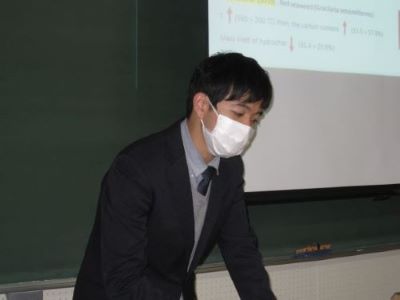
Lecture: Ali Mohammed Ahmed MOHAMMED
D1 student, Graduate School of Advanced Science and Engineering, Hiroshima University
“Stability of carbon nanotube in supercritical water to be used as biomass gasification catalyst”
Among carbonaceous catalysts, carbon nano tube (CNT) is a possible biomass catalyst or a catalyst support, nanocarbon should be more effective because of its nanostructure and a high specific surface area can be achieved. However, no studies have been investigated its behavior and characteristics in the supercritical water (SCW). The available carbon nanotube in our study is aqueous and contains surfactants, this original material of CNT and Surfactants with concentration (0.019 wt%) is applied in the supercritical water at 600℃, 25 MPa, and residence time changed in a range 50-94s. According to the results these surfactants decomposed in SCW conditions and considered as an undesirable content which hinders a better understanding on CNT gasification. Surfactants are totally removed by applying a hot compressed water on a dried original material which trapped in a fixed packed bed. The obtained pure CNT is applied in SCW conditions, 121 mg of pure CNT is placed in the packed bed, then water is sent at 25 MPa with changing the temperature in a range 600-700 ℃. Carbon gasification efficiency (CGE) was 0.0012 at 600 ℃ in 5 h operation but it increased by 40 times at 700 ℃ to be 0.05. Raman spectroscopy analysis shows that D/G ratio is kept constant around 1.20 for 600 – 650 ℃ and raised to 1.34 at 700 ℃ indicating to the defects occurred at high temperature.
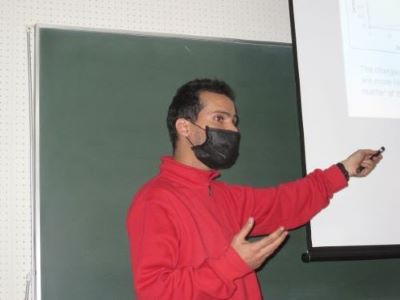

 Home
Home














